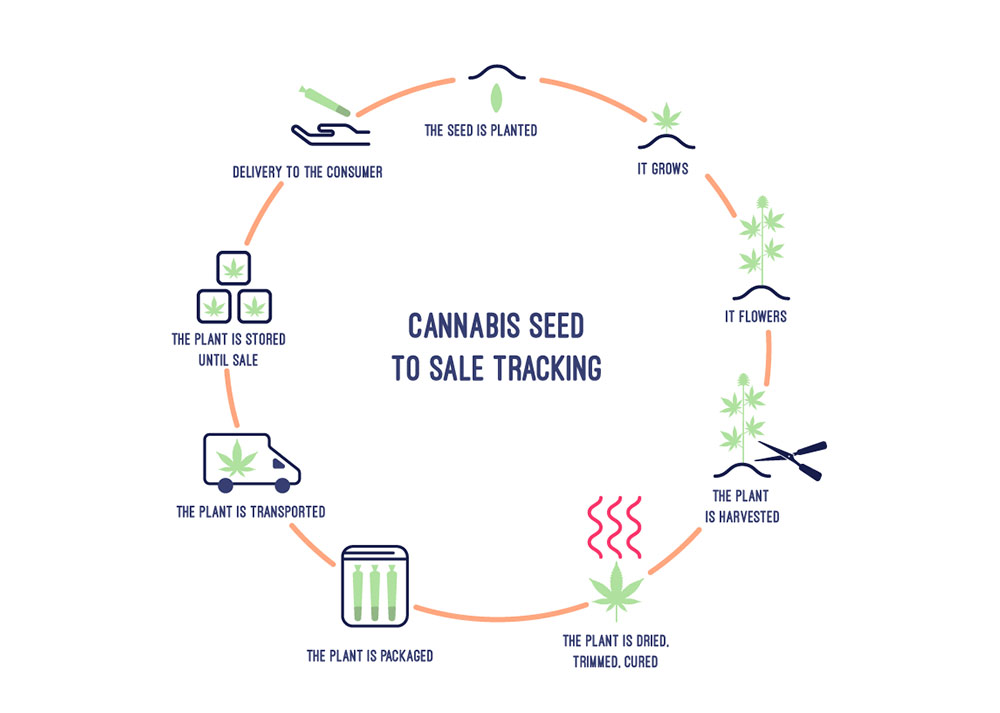With legality comes great responsibility, we can imagine Peter Parker saying. Luckily the legal cannabis industry now employs seed-to-sale tracking – a key element in carrying the burden of this responsibility.
Though the days of illegal cannabis cultivation are, sadly, not over, it’s becoming a tough fight with the legal industry. Cannabis tax money, the estimated high profits for the investors in the future, and other perks of legalizing marijuana will make lawmakers and politicians work hard on diminishing the black market as much as they can.
Legal cannabis industry as a concept is excellent and has many marijuana users, fans and advocates working hard to make it a reality. The reality, though, is complicated and a bit harsh on the producers who have to go through many hurdles until they are able to grow their plants. That’s something that illegal cultivators don’t have to think about. They just have to think about the fines and time in prison if they get caught.
So, what’s one of the best things the regulators have invented in their fight against the black cannabis market? Seed to sale tracking systems.
What Is Seed-to-Sale Tracking?
As legal weed first appeared on the North American continent – first in California, then in Canada, and spreading further – it became clear that with legality comes the arduous job of regulating this new legal product.
One of the main things that every state that legalized marijuana needs to regulate is the licensing – setting up rules by which the state will give out licenses for cultivating and/or selling cannabis and cannabis products. Ever since they introduced seed-to-sale tracking and made it mandatory for medical marijuana producers, it’s helped tremendously in the fight against the black market.
In plain words, seed-to-sale tracking is a system that allows the legislators, law enforcement, the company itself and the customer to track a cannabis product from its very planted seed, through cultivation, harvest, testing, and other processing, to product delivery to the patient/customer.
From Modest Beginnings to Elaborate Software Solutions
The first cannabis seed-to-sale tracking system appeared in Colorado in 2010 after they created a framework for regulating recreational and medical marijuana cultivation. All subsequent states worked on their frameworks and tracking systems based on the Colorado model.
It was quite simple. According to their model, each plant was assigned an RFID (radio-frequency identification), and then it was weighed in different stages – at harvest, after drying, at the dispensary, and at the end of the business day. All of these numbers were sent over to the inventory tracking system where they were stored and available to the enforcement officers and legislators.
The main goal of having such a tracking system was to prevent the diversion of marijuana from legal states elsewhere, prevent cannabis sales to minors, and counter the black market.
Basically, the system was invented to help regulatory agencies be able to monitor the complete process of cannabis cultivation, from planting the seed to delivering the product to the final consumer (medical cannabis patient).
It was made mandatory only for medical cannabis cultivators, though recreational cannabis companies are also using it, and it was similar to the track and trace system that already existed in the pharmaceutical industry. A similar system also exists for most agricultural products today.
Though it started as a simple tracking system, today there are powerful software solutions that pot growers use to track their cultivation process. These solutions are created to help the government, as was intended, but they also include many features that are particularly helpful to the grower – more on that further down.
Who Needs Seed-to-Sale Systems
If you asked a cultivator, most of them would probably prefer not to go through all that work (and expenses) that seed-to-sale tracking systems require. Comparing today’s strict regulatory framework to the “good old” ’60s or ’70s when no regulations existed may bring a sense of nostalgia to weed growers who remember those times. But only for a brief moment, because apart from maybe having it easier, illegal growing cannot outweigh the benefits of legal cannabis.
So, the seed-to-sale tracking was created to assist the regulatory bodies in their efforts to make sure pot cultivators adhere to the rules and policies of the newly legalized industry.
However, there are many reasons why cannabis cultivators and retailers need these systems as well. A lot of software solutions today include neat cultivation features that can help growers:
- Track the plant’s genealogy
- Track the nutrients, water, pH, humidity, temperature – that way growers can repeat successful yields
- Calculate the cost of the whole cultivation process
- Track the amount of time needed for each operation
- Identify ways to optimize the process
- Manage the inventory
Some advanced software solutions use biometric technology which enables higher security of the whole operation, because it is much more difficult to make diversions when the tool is based on identifying personal characteristics of the cultivators (voice, fingertips, etc.).
But apart from the software, seed-to-sale tracking also includes other non-technical aspects of the system, such as written reports, physical printed labels that are tagged to each plant, etc.
So, How Does the Seed-to-Sale Tracking System Actually Work?
There are many seed-to-sale tracking solutions today. Most of them work on a similar principle. They use physical labels that are attached to each plant, and barcode labels for the containers.
These labels are scanned at each step of the cultivation process.
Here’s what the entire life cycle of a cannabis plant looks like:

So, whenever something happens to the plant: from adding nutrients and additives, through harvesting, extraction and testing the plant, to transportation, storage and delivery of the plant to the consumer – everything is tracked and monitored.
The system is updated with each label scanning and all information about it is available to the regulatory authorities at all times, and it is also available to the end consumer.
If a plant fails to reach maturity and doesn’t make it to harvest, it is destroyed, and that information is also recorded.
Pros and Cons of Cannabis Tracking
The main con of a cannabis tracking system, from the viewpoint of pot cultivators and companies, is the fact that it is primarily built to make the companies stay compliant – cultivate crops according to regulations, pay taxes, etc. Their primary goal is not to help companies grow better quality crops and have bigger yields.
But, as we mentioned, today’s software solutions cater to the needs of the cultivators as well. Pot growers who do rely on those features and use them to their maximum potential certainly manage to optimize their production and reach the desirable quality of bud.
The future of seed-to-sale tracking systems is uncertain. It can go both ways – become even more government-controlled and mandatory, or become completely commercialized if the regulations loosen up. Either way, the companies that are making these software systems will do their best to add as many helpful features to make their product indispensable to pot growers, even if it isn’t mandatory.




